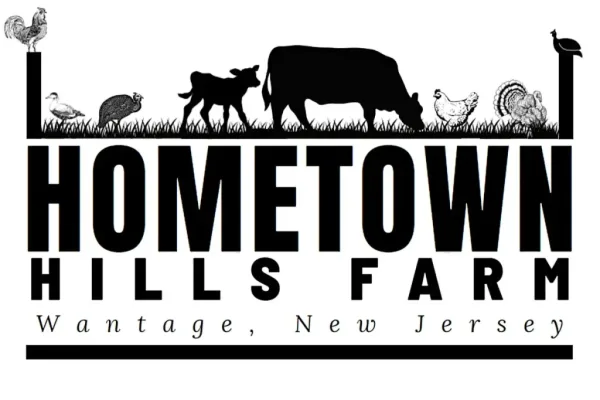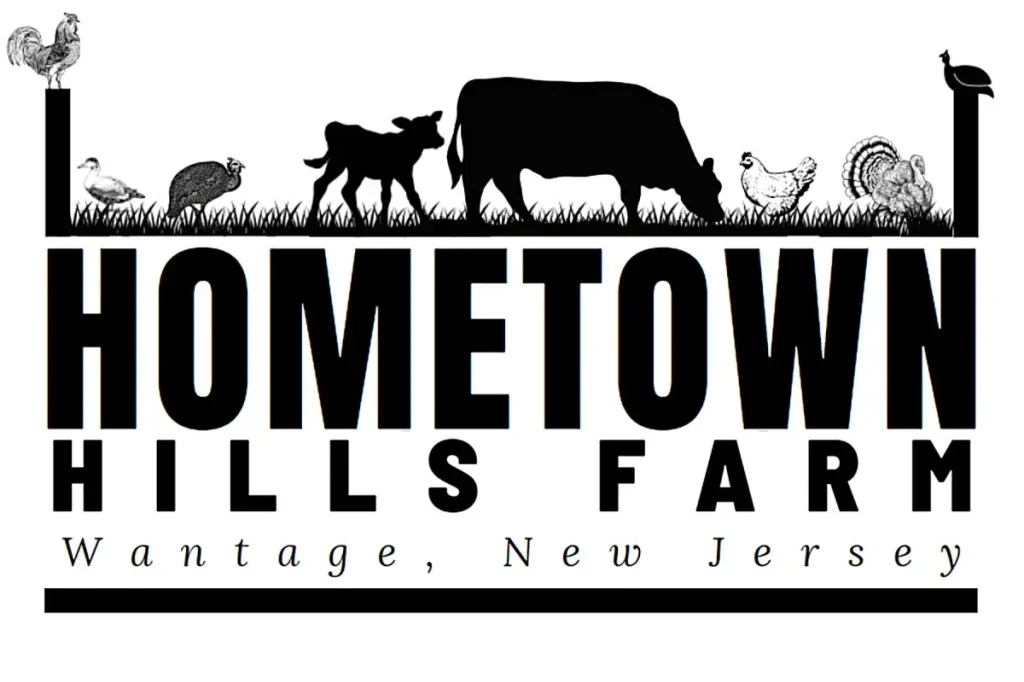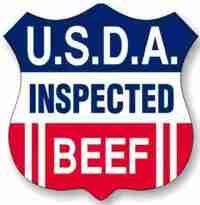Introduction to Grass-Fed Beef
Grass-fed beef refers to meat that comes from cattle that have been raised primarily on a diet of grass and forage, as opposed to grain-based feeds commonly used in conventional beef production. The feeding practices for grass-fed cattle are more aligned with their natural dietary habits, allowing them to graze freely in pastures rather than being confined to feedlots. This natural grazing behavior not only contributes to the overall health and well-being of the animals but also influences the quality and flavor of the beef produced.
In conventional beef farming, cattle are often fed a diet rich in grains such as corn and soy, which can lead to faster weight gain. However, this method raises concerns regarding animal welfare, environmental impact, and nutritional quality. In contrast, grass-fed cattle tend to have a more varied diet, consuming different types of grasses and legumes that can enhance the nutritional value of the beef. Grass-fed beef is often touted for its higher content of omega-3 fatty acids, antioxidants, and vitamins compared to its grain-fed counterpart.
The practices involved in grass-fed beef farming emphasize a more sustainable approach to livestock production. Farmers typically implement rotational grazing methods to maintain the health of the pastureland, prevent overgrazing, and promote biodiversity in the ecosystem. These practices not only benefit the animals but also contribute to improved soil health and carbon sequestration, which are crucial in mitigating climate change. While grass-fed beef often comes with a higher price tag, many consumers are increasingly drawn to the ethical and environmental aspects of this farming method, making it a significant topic in discussions about sustainable agriculture.
Environmental Impact of Grass-Fed Beef
The environmental benefits of grass-fed beef production are gaining recognition as global concerns regarding sustainability and climate change intensify. Grass-fed cattle, which graze on pasture rather than being confined to feedlots, can significantly contribute to soil health. The practice of rotational grazing, where livestock are moved between pastures, promotes the growth of diverse plant species. This biodiversity is crucial, as varied plant life enhances soil structure and nutrient cycling, leading to healthier ecosystems. Studies have shown that these practices can increase soil organic matter, which plays a vital role in carbon sequestration, thereby reducing atmospheric carbon dioxide levels.
Moreover, pasture-based cattle farming offers a viable approach to mitigating greenhouse gas emissions. Traditional feedlot systems often contribute to significant methane production, a potent greenhouse gas emitted during digestion. In contrast, research indicates that grass-fed cattle may produce less methane over their lifetimes, particularly when managed under well-structured grazing systems. By optimizing the digestive process through natural foraging, these animals can contribute to a decrease in overall emissions associated with beef production.
Additionally, grass-fed beef farming can enhance biodiversity by maintaining habitats for various species, including pollinators and those that contribute to pest control. This integration of animal and plant life helps preserve ecosystems in agricultural landscapes. Furthermore, healthy pastures can improve water retention in the soil, reducing runoff and minimizing erosion. Efficient water use not only benefits the farming system but also contributes to larger hydrological cycles, ensuring a balance within ecosystems and helping to sustain local water supplies. Overall, the environmental impact of grass-fed beef farming presents a compelling case for its consideration as a more sustainable option in the global meat supply chain.
Animal Welfare Considerations
The rise of grass-fed beef production models has brought increased attention to animal welfare, as these systems typically prioritize the well-being of livestock. In contrast to conventional beef production methods that often rely on confinement in feedlots, grass-fed systems allow animals greater freedom of movement and the opportunity to engage in natural behaviors essential for their physical and psychological health.
Pasture-raised cattle have access to open fields, where they can roam, graze, and socialize in a manner that aligns with their instinctual behaviors. This freedom not only mirrors the animal’s natural habitat but also contributes significantly to their overall welfare. Research indicates that cattle raised in environments that respect their innate needs exhibit lower stress levels, which can lead to better health outcomes. Comparatively, cattle confined in feedlots may experience stress and discomfort due to overcrowding and limited access to natural sunlight and fresh air.
The ethical implications of these practices extend beyond animal welfare; they also influence the quality of the meat that consumers purchase. Grass-fed beef is often associated with superior flavor and nutritional profiles. The animals’ diets, consisting primarily of grass and forage rather than grain, not only promote healthier growth but also enrich the meat with omega-3 fatty acids and beneficial nutrients, reflecting the quality of the animal’s living conditions. Additionally, the emphasis on humane treatment in grass-fed systems resonates with a growing consumer interest in ethically produced food.
In conclusion, the animal welfare considerations inherent in grass-fed beef production reveal a profound commitment to respecting the well-being of livestock. By prioritizing natural behaviors and providing ample space for movement, these systems not only enhance animal health but also contribute positively to the quality of the beef produced, aligning ethical practices with consumer preferences.
Grass-Fed Beef and Soil Health
Grass-fed beef is often heralded for its potential benefits not only for human health but also for the environment, particularly through its positive impact on soil health. The relationship between grass-fed cattle and soil is deeply interconnected, rooted in the principles of regenerative agriculture. This farming method emphasizes the importance of nurturing the land while producing food, and grass-fed systems play a crucial role in this paradigm.
One significant aspect of grass-fed beef production is the concept of nutrient cycling. Cattle, when grazed appropriately, contribute to the health of the soil through their natural grazing patterns. As cattle consume grass, they stimulate growth through their grazing, which encourages a diverse array of plant species. This biodiversity is essential for soil health, as varied plant roots improve soil structure and increase the capacity for nutrient retention. Furthermore, the manure produced by grass-fed cattle serves as a natural fertilizer, enriching the soil with essential nutrients that promote the growth of subsequent crops.
Moreover, grazing patterns can enhance soil fertility and have profound implications for carbon sequestration. When cattle graze in a managed rotational system, they help aerate the soil and improve its organic matter content. This process not only bolsters soil health but also captures carbon dioxide from the atmosphere, contributing to climate change mitigation. As grasses grow and die, carbon becomes sequestered in the soil, thereby combating desertification and promoting a more sustainable land-use strategy.
In conclusion, the relationship between grass-fed beef and soil health illustrates how livestock can play a pivotal role in sustainable agriculture. By facilitating nutrient cycling and improving soil fertility, grass-fed cattle contribute to healthier ecosystems and serve as a model for land management practices that prioritize sustainability. This interconnected approach underscores the importance of adopting regenerative practices for both food production and environmental health.
The Role of Grasslands in Carbon Sequestration
Grasslands occupy approximately one-quarter of the Earth’s land surface and play a pivotal role in environmental health, particularly in carbon sequestration. These ecosystems are characterized by their dense vegetation, primarily composed of grasses, which work effectively in absorbing carbon dioxide (CO2) from the atmosphere. Healthy and well-maintained grasslands can sequester significant amounts of carbon in their root systems and soil, thus contributing to climate change mitigation. The process is facilitated through photosynthesis, where grasses capture CO2 and convert it into organic matter, which accumulates both above and below ground.
Grass-fed beef farming can significantly impact grassland preservation and, consequently, carbon sequestration. By practicing sustainable grazing methods, such as rotational grazing, livestock farmers can ensure that grasslands remain healthy and continue to function as effective carbon sinks. These practices not only support the ecosystem function of the grasslands but also promote biodiversity. By allowing grasses to recover between grazing periods, farmers can enhance root growth and soil health, which ultimately leads to increased carbon storage capabilities.
Economic Aspects of Grass-Fed Beef Production
The economic implications of grass-fed beef production play a crucial role in fostering sustainability within the agriculture sector. One of the most significant benefits is the positive impact on local economies. As demand for grass-fed beef rises, local farmers are often able to capitalize on this trend, generating revenue that stays within the community. This local engagement aids in maintaining the viability of small-scale farms, which are crucial for diversity in agriculture and the preservation of rural landscapes.
Job creation is another critical aspect linked to the rise of grass-fed beef production. The transition towards sustainable agricultural practices necessitates a workforce skilled in managing these methods, thereby providing employment opportunities in regions where traditional cattle ranching may be declining. Not only do these jobs stabilize local economies, but they also promote the development of new skills related to sustainable farming practices, which can enhance future job prospects within the agricultural sector.
Furthermore, as consumer awareness regarding the benefits of grass-fed beef increases, demand for these products is on the rise. This consumer preference drives farmers to adopt sustainable practices, benefitting both their businesses and the environment. Grass-fed beef is often perceived as a healthier option, highlighted by its lower levels of fat and higher concentrations of beneficial nutrients, which enables farmers to command premium prices in the market. Thus, the economic viability of grass-fed beef production not only offers farmers a profitable avenue but also motivates them to maintain environmentally sound practices.
In summary, the economic aspects of grass-fed beef production extend far beyond individual profits. They encompass a sustainable model that contributes to job creation, supports local economies, and responds to increasing consumer demands. The system creates a symbiotic relationship where farmers, consumers, and local communities benefit from the continued promotion of sustainable agriculture.
Challenges in Grass-Fed Beef Production
Grass-fed beef production offers numerous benefits, but it also faces a set of significant challenges that must be recognized and addressed. One of the primary hurdles is land use constraints. Grass-fed cattle require more extensive grazing areas compared to their grain-fed counterparts; thus, available land resources can become a limiting factor. In many regions, the suitable land is finite, exacerbated by urbanization and agricultural competition. The demand for beef, combined with the fixed supply of viable pastureland, can pose challenges to sustainability efforts.
Another major challenge is climate variability. Grass-fed systems are heavily reliant on natural weather patterns, with cattle feeding primarily on pasture grasses. Fluctuating rainfall, extreme weather events, and changing temperature patterns can adversely impact grass growth and grazing conditions. In certain areas, prolonged droughts can lead to diminished forage availability, necessitating adaptation strategies among ranchers. Effective management practices are crucial to mitigate these climate-related risks, but they require time and investment.
Additionally, market access remains a significant obstacle for grass-fed beef producers. Many consumers still prioritize convenience and lower prices associated with conventional beef, which can overshadow the quality attributes of grass-fed products. Produce from these systems often comes at a higher cost due to greater land needs and longer growth cycles. This dynamic can result in limited market reach, constraining the visibility and growth of grass-fed beef options. Establishing a reliable distribution network that connects local producers to consumers is vital for improving market access and ensuring the economic viability of grass-fed beef production.
Addressing these challenges requires collaborative efforts among stakeholders, integrating sustainable practices while ensuring a compelling case for the consumer regarding the value of grass-fed beef. Through innovations and research, potential solutions can be sought, paving the way toward a more sustainable future in beef production.
Consumer Choices and Grass-Fed Beef
The choices made by consumers play a pivotal role in shaping the sustainability of grass-fed beef. As awareness of environmental and ethical considerations continues to rise, informed consumer purchasing decisions directly impact farming practices and contribute to more sustainable agricultural systems. Grass-fed beef, often viewed as a healthier and more ecologically responsible option compared to grain-fed counterparts, invites consumers to consider not just the quality of the meat but also the broader implications of their choices.
One of the most significant effects of consumer behavior on the beef industry is seen through demand. When consumers actively seek out grass-fed products, they send a clear message to producers regarding their preferences. This, in turn, encourages farmers to adopt and maintain more sustainable practices that align with consumer expectations. By prioritizing the purchase of grass-fed beef, consumers can help to shift agricultural practices towards methods that advocate for humane animal treatment, reduced carbon footprints, and improved land management.
The rise of certifications and labels also plays a crucial role in guiding consumer choices. Various organizations now utilize certifications to help consumers easily identify beef that meets specific sustainability standards. These labels help to demystify the meat selection process, enabling consumers to make choices aligned with their values. When shopping, individuals can look for brands that adhere to certification standards, such as animal welfare, organic farming practices, or regenerative agriculture, further reinforcing the demand for sustainable products.
Ultimately, consumer education is vital in fostering an understanding of sustainable agriculture and supporting the continued success of grass-fed beef. Equipping consumers with knowledge about the environmental, health, and ethical benefits of their food choices can catalyze a more sustainable food system. As consumers become more informed, their decisions collectively drive transformation within the industry, leading to a positive impact on both the environment and local economies.
Conclusion: The Future of Grass-Fed Beef Sustainability
As discussions surrounding sustainability become increasingly relevant, grass-fed beef emerges as a pivotal player in creating a more ecologically balanced food system. The interconnectedness of environmental health, animal welfare, economic viability, and consumer choice illustrates the profound impact that adopting grass-fed beef practices can have on the future of agriculture. By prioritizing sustainable beef production methods, we can mitigate the adverse effects of conventional farming practices, which often contribute to biodiversity loss, soil degradation, and greenhouse gas emissions.
The environmental benefits of grass-fed beef are substantial. Grass-fed cattle tend to have lower carbon footprints compared to their grain-fed counterparts because they rely on natural forage and contribute less to methane emissions through improved digestive health. Additionally, the rotational grazing systems commonly used in grass-fed beef farming help rejuvenate pasturelands, promoting soil health and enhancing carbon sequestration. These practices not only support ecosystem stability but also lay the groundwork for long-term agricultural resilience.
Furthermore, the ethical considerations surrounding animal welfare cannot be overlooked. Grass-fed beef production often aligns more closely with humane practices, allowing cattle to graze freely and live in more natural conditions. This commitment to welfare resonates with a growing segment of consumers who prioritize ethical sourcing in their food choices. As awareness of these issues continues to expand, consumer demand for grass-fed beef is expected to rise.
Moreover, the economic viability of sustainably produced grass-fed beef provides significant opportunities for both farmers and consumers. By supporting local ranchers who employ sustainable practices, consumers can contribute to a more robust local economy while ensuring that they are partaking in ethical and environmentally friendly food choices. Advocacy for grass-fed beef is crucial not only for the health of our planet but also for fostering a sustainable agricultural future.
Share This Story, Choose Your Platform!
Grass-Fed Beef & Pastured Pork
Order Online
Discover the difference of premium, locally sourced meat with our grass-fed beef shares. Sourced directly from our sustainable Wantage, New Jersey farm in Sussex County, our cattle are humanely raised on lush pastures. Each cut is carefully selected and expertly processed to deliver unmatched freshness and flavor. Taste the exceptional quality of our grass-fed beef, raised right here in our community.


